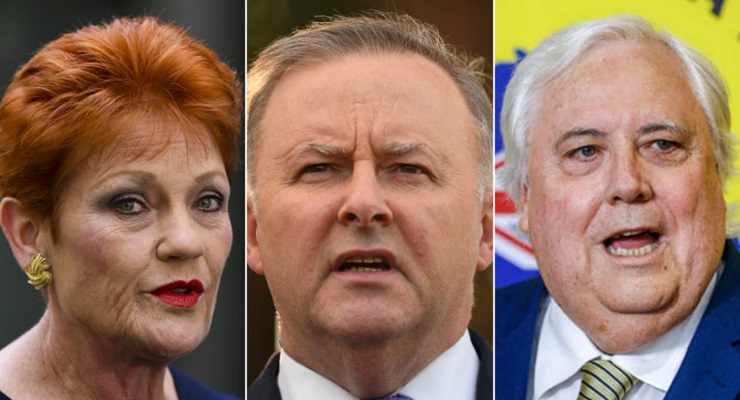What does the unlikely group of the Labor Party, Clive Palmer, Jacqui Lambie, Cory Bernardi’s now-defunct Australian Conservatives and Pauline Hanson’s One Nation have in common?
All of them have a greater commitment to transparency about political funding than the Coalition.
On Monday the Electoral Commission will release political donations data for 2019-20. Except what you’ll see is for some parties and donors only a small part of the story.
It’s a point we’ve made over and over again for years, and which deserves repeating: the federal donation disclosure laws are risible, with a disclosure threshold now at the absurdly high $14,000 courtesy of the Howard government’s changes to keep donations secret in 2006, and the toxic combination of the Coalition and Steve Fielding in the Senate that prevented Labor from reversing them in 2008.
Because of the absurd nature of the federal laws, a donor can give $14,000 to each branch of a major party and not have to report it. Nor does it need to be reported by the party, meaning a donor can hand more than $100,000 to one side of politics through its various branches in secret.
But the ALP’s branches report all donations above $1000, not the required threshold, and have done for a decade. Palmer is completely unabashed about his contributions to his own party: he lists every dollar of his contributions to the United Australia Party via Mineralogy, down to a $85 donation in April 2019.
Lambie, Hanson and Bernardi reported donations below the threshold too. The Greens used to report small donations as well, though in the last couple of years have not reported receiving any.




In truth, transparency by Palmer and the minor parties matters less: we know Palmer’s anti-Labor agenda; and while Hanson and Lambie hold crucial swing votes in the Senate, there appears to be little industry attempt to influence them via donations, except for the seedy example of Adani handing tens of thousands of dollars to Hanson.
But the major parties are in the business of taking large amounts of money from the private sector and, in Labor’s case, trade unions, and allowing them to influence policy in return. Money determines who gets to have a role in formulating — in some cases dictating — policy. Labor allows the public insight into who is funding it to secure that role, while the Liberals and the Nationals try to hide that as much as possible.
Many major companies share Labor’s approach and disclose everything given to political parties, regardless of the amount. Donors are not required to disclose funding to parties that does not fall within the narrow definition of “donation”, such as buying a seat at a fundraising dinner and sitting next to a minister, but many disclose them anyway (parties are required to disclose all income, donations or not, above $14,000).
Some corporations disclose every single cent they give to parties, regardless of context (like Westpac). Some, like ANZ, simply make a donation and refuse to attend fundraisers at all (and NAB stopped donating altogether five years ago).
In the soft corruption that is political donations — buying access to influence politicians in private — much of corporate Australia sets a higher standard for disclosure and transparency than the party of business and its rural rump. Much, but not all. We don’t know who is giving to the Coalition and keeping it hidden by exploiting the lax Commonwealth donation laws.
If it’s good enough for Labor, and Palmer, and Hanson, and some of our biggest corporations, why isn’t it good enough for the Coalition? What reason could the Liberal and National parties have for refusing to reveal who is trying to influence them and dictate policy?
What are they hiding?




Fetch your first 12 weeks for $12
Here at Crikey, we saw a mighty surge in subscribers throughout 2020. Your support has been nothing short of amazing — we couldn’t have got through this year like no other without you, our readers.
If you haven’t joined us yet, fetch your first 12 weeks for $12 and start 2021 with the journalism you need to navigate whatever lies ahead.
Peter Fray
Editor-in-chief of Crikey








